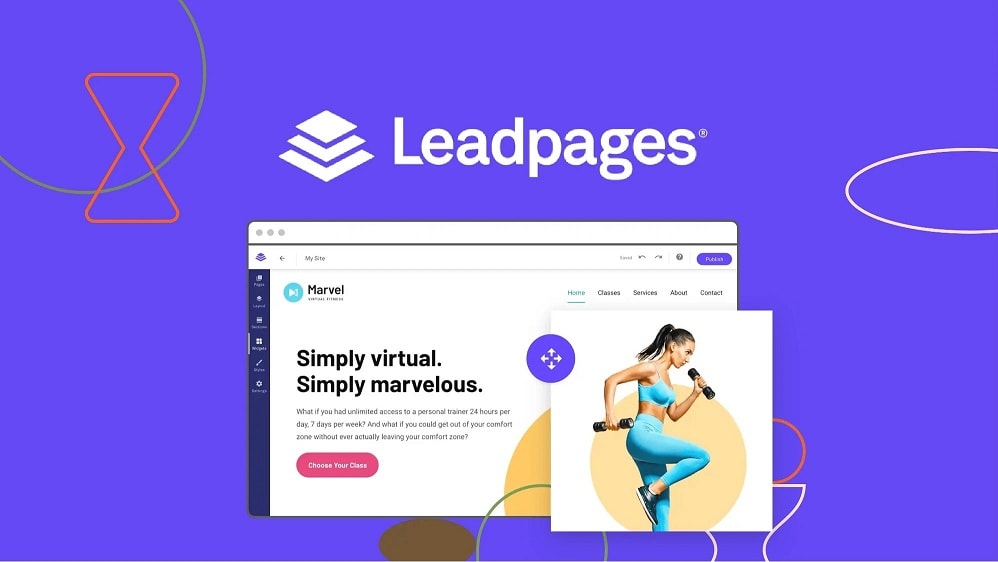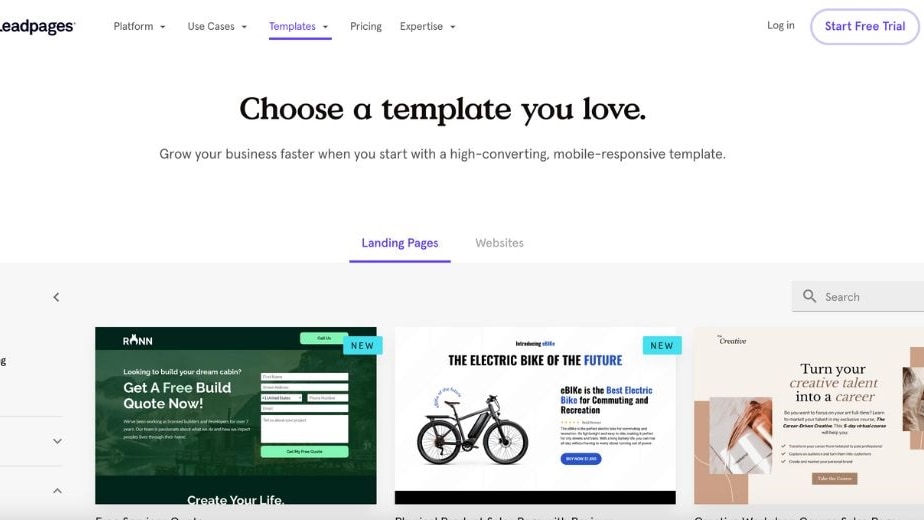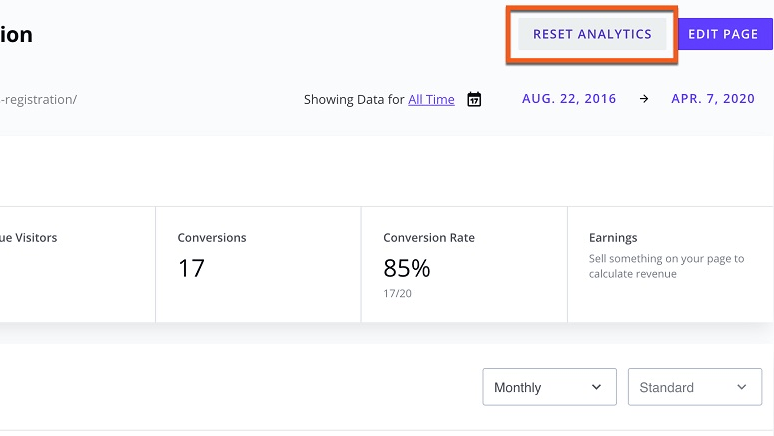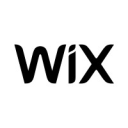Leadpages vs Unbounce: Choosing the right platform for the optimal conversion
- 01Leadpages vs Unbounce: overview
- 02What's the difference between Leadpages and Unbounce?
- 03Leadpages pros and cons
- 04Unbounce pros and cons
- 05Leadpages compared to Unbounce
- 06Unbounce compared to Leadpages
- 07Features comparison
- 08Leadpages vs Unbounce: Which is the best for your business?
- 09Promotions on Website Builder software
- 10Alternatives to Leadpages & Unbounce
Access up to $19 savings on Leadpages & $2,725 on Unbounce
Access up to $19 savings on Leadpages & $2,725 on Unbounce
Choosing the right landing page builder for your business can significantly impact your online marketing efforts. These tools play a crucial role in creating high-converting landing pages, capturing leads, and optimizing your conversion rates. With numerous options available in the market, selecting the ideal platform for your needs can be a daunting task.
That's why we've crafted this comprehensive comparison of two prominent solutions—Leadpages vs. Unbounce. We'll delve into their key features, functionalities, and pricing structures to provide you with the necessary insights to make an informed decision for your landing page needs. Whether you prioritize ease of use, customization options, or advanced analytics, this comparison will help you identify the perfect fit for your business's marketing objectives.
Leadpages vs Unbounce: overview
Leadpages and Unbounce are prominent contenders in the field of landing page builders, each catering to distinct user preferences and marketing strategies.
Leadpages is recognized for its user-friendly interface and extensive library of customizable templates. It excels in providing users with a straightforward platform for creating and optimizing landing pages, lead capture forms, and sales funnels. On the other hand, Unbounce is acclaimed for its advanced customization options and robust A/B testing capabilities. It offers users a high degree of flexibility in designing landing pages tailored to their brand and target audience.
Now, let's delve into the Leadpages vs. Unbounce comparison to help you decide on the best landing page builder for your specific marketing objectives.
What's the difference between Leadpages and Unbounce?


When comparing Leadpages and Unbounce, it's crucial to discern their fundamental differences to determine the best fit for your online marketing needs. The primary divergence lies in their approach to landing page creation and optimization.
Leadpages is renowned for its user-friendly interface and extensive template library. It focuses on simplicity and ease of use, allowing users to quickly create high-converting landing pages, lead capture forms, and sales funnels. With features like drag-and-drop editing, customizable templates, and built-in analytics, Leadpages caters to marketers who prioritize rapid deployment and straightforward optimization processes.
Conversely, Unbounce is lauded for its advanced customization options and robust A/B testing capabilities. It empowers users to create highly tailored landing pages tailored to their brand and target audience. Unbounce's flexible design tools, including custom CSS and JavaScript integration, enable marketers to create unique and visually stunning landing pages optimized for conversion. Additionally, Unbounce offers comprehensive A/B testing functionality, allowing users to experiment with different page variations to maximize conversion rates effectively.
Another notable difference between Leadpages and Unbounce is their pricing and feature offerings. Leadpages provides a range of subscription plans tailored to different business needs, with features like unlimited landing pages, pop-ups, and integrations. In contrast, Unbounce offers tiered pricing based on the number of landing pages and unique visitors, with additional features like advanced targeting and dynamic text replacement available on higher-tier plans.
The choice between Leadpages and Unbounce depends on your specific marketing goals, budget, and level of customization required. Leadpages may be preferable for those seeking a user-friendly solution with quick setup and optimization, while Unbounce appeals to marketers looking for advanced customization options and comprehensive A/B testing capabilities.

40% off the Standard plan for 1 month on Leadpages
Get 40% off the Standard plan for 1 month on Leadpages and up to $19 savings with Secret.
Leadpages pros and cons
What are the advantages of Leadpages?
- Ease of use: Leadpages offers a user-friendly interface with intuitive drag-and-drop functionality, making it accessible even for users with minimal technical expertise.
- Template library: Leadpages provides a vast selection of professionally designed templates for various purposes, including lead capture pages, sales pages, webinar pages, and more. This extensive library saves time and effort in designing landing pages from scratch.
- Integration capabilities: Leadpages seamlessly integrates with a wide range of third-party tools and platforms, including email marketing services, CRM software, webinar platforms, and eCommerce platforms, allowing for streamlined workflows and enhanced functionality.
- Lead generation tools: Leadpages offers robust lead generation features such as pop-up forms, alert bars, and opt-in text campaigns, enabling users to effectively capture leads and grow their email list.
- Analytics and A/B testing: Leadpages includes built-in analytics tools and A/B testing functionality, allowing users to track the performance of their landing pages and optimize them for better conversion rates over time.
What are the disadvantages of Leadpages?
- Limited customization options: While Leadpages provides a wide range of templates, the level of customization available may be somewhat limited compared to other platforms, restricting users who require highly tailored designs.
- Page load speed: Some users have reported issues with page load speed when using Leadpages, which can negatively impact user experience and SEO rankings.
- Higher pricing tiers: Leadpages' pricing structure may be relatively higher compared to some competitors, especially for users requiring advanced features such as A/B testing and advanced integrations.
- Limited advanced features: While Leadpages offers essential features for creating and optimizing landing pages, it may lack some advanced functionalities found in other platforms, such as dynamic content personalization or advanced automation options.
- Customer support: Although Leadpages provides customer support via email and chat, some users have reported occasional delays in response times or difficulties in reaching resolution for technical issues.
Compare Leadpages to other tools
Unbounce pros and cons
What are the advantages of Unbounce?
- Advanced customization: Unbounce offers extensive customization options, allowing users to create highly tailored landing pages with custom CSS, JavaScript integration, and dynamic content.
- A/B testing: Unbounce provides robust A/B testing functionality, allowing users to experiment with different page variations and elements to identify the most effective combination for improving conversion rates.
- Conversion-centric features: Unbounce includes a variety of features designed to optimize conversion rates, such as pop-up and sticky bar overlays, mobile-responsive design, and multi-step forms.
- Integration ecosystem: Unbounce integrates seamlessly with a wide range of third-party tools and platforms, including email marketing services, CRM systems, analytics platforms, and webinar software.
- Customer support and resources: Unbounce offers comprehensive customer support via email, chat, and phone, with responsive support agents available to assist users with technical issues and questions.
What are the disadvantages of Unbounce?
- Learning curve: Due to its advanced customization options and feature-rich interface, Unbounce may have a steeper learning curve compared to some other landing page builders, requiring users to invest time in learning how to utilize its full capabilities effectively.
- Pricing: Unbounce's pricing may be relatively higher compared to some competitors, particularly for users requiring access to advanced features such as A/B testing and dynamic content. This higher cost may be prohibitive for smaller businesses or those on a tight budget.
- Limited template selection: While Unbounce provides a selection of professionally designed templates, the library may be somewhat limited compared to other platforms, potentially requiring users to invest more time in customizing their landing pages from scratch.
- Page load speed: Some users have reported issues with page load speed when using Unbounce, particularly for pages with extensive customizations or third-party scripts. Slow page load times can negatively impact user experience and SEO performance.
- Complexity for simple projects: For users with straightforward landing page needs or minimal technical skills, Unbounce's advanced features and customization options may be overkill, leading to unnecessary complexity and potentially higher costs.
Compare Unbounce to other tools
Leadpages compared to Unbounce
Leadpages and Unbounce are two prominent landing page builders, each offering unique strengths. Leadpages excels in its user-friendly interface and extensive template library, making it ideal for marketers seeking quick and easy landing page creation.
On the other hand, Unbounce shines with its advanced customization options and robust A/B testing capabilities, catering to users who prioritize flexibility and optimization. While Leadpages is known for simplicity and accessibility, Unbounce provides more sophisticated features for fine-tuning landing pages to maximize conversion rates.
Is Leadpages better than Unbounce?
Choosing between Leadpages and Unbounce depends on your specific needs and expertise in digital marketing. If you're looking for a straightforward, efficient way to design landing pages without needing deep technical skills, Leadpages stands out as the go-to option. Its simplicity ensures that even beginners can craft effective pages quickly.
Conversely, Unbounce is the better choice for those who require a higher level of control over their landing page design and want to deeply analyze their performance through testing. It's particularly suited for professionals who have the time and desire to experiment with various elements to achieve the perfect balance that resonates with their audience.
What is Leadpages best used for?
Leadpages is best used for creating high-converting landing pages and lead generation forms quickly and easily. With its user-friendly interface and extensive template library, Leadpages is ideal for marketers, entrepreneurs, and businesses seeking to capture leads, promote products or services, and drive conversions online.
Whether it's building sales pages, webinar registration pages, or opt-in forms, Leadpages simplifies the process with drag-and-drop functionality and customizable templates. Additionally, Leadpages offers features such as A/B testing and analytics to optimize landing pages for maximum effectiveness. Overall, Leadpages empowers users to create professional-quality landing pages without the need for extensive technical skills or resources.
Can Leadpages replace Unbounce?
While Leadpages offers robust features for creating landing pages and capturing leads, it may not entirely replace Unbounce for all users. Unbounce provides advanced customization options, extensive A/B testing capabilities, and dynamic content personalization that cater to more sophisticated marketing needs.
Additionally, Unbounce is favored by users requiring highly tailored landing page designs and intricate optimization strategies. While Leadpages excels in simplicity and ease of use, Unbounce offers a higher level of flexibility and control.
Is Leadpages cheaper than Unbounce?
Leadpages generally offers more affordable pricing options compared to Unbounce, making it an attractive choice for budget-conscious users. Leadpages’s pricing structure provides various subscription plans tailored to different business needs, including basic features such as landing page creation, lead capture forms, and integrations, at lower price points.
On the other hand, Unbounce tends to be pricier, particularly for users requiring access to advanced features like A/B testing, dynamic content, and extensive customization options. While both platforms offer value for marketers, Leadpages may present a more cost-effective solution for those seeking essential landing page functionality without the need for extensive customization or optimization features.
Is there a better Website Builder software than Leadpages?
Deciding if there's a superior software to Leadpages hinges on your precise landing page creation requirements and objectives. Several alternatives cater to diverse marketing needs.
Options like Unbounce, Instapage, ClickFunnels, and HubSpot Landing Pages offer distinct features and benefits. For instance, Unbounce boasts advanced customization options and A/B testing capabilities, while Instapage emphasizes simplicity and speed. The ideal software choice depends on factors such as your design preferences, conversion optimization goals, and budget constraints.
40% off the Standard plan for 1 month on Leadpages
Get 40% off the Standard plan for 1 month on Leadpages and up to $19 savings with Secret.
Unbounce compared to Leadpages
Unbounce and Leadpages are two prominent platforms for creating landing pages, each offering unique strengths. Unbounce stands out with its advanced customization options and robust A/B testing capabilities, allowing users to create highly tailored pages and optimize them for maximum conversion rates.
In contrast, Leadpages excels in simplicity and ease of use, providing a user-friendly interface and an extensive template library for quick landing page creation. While Unbounce caters to users requiring intricate design and optimization features, Leadpages appeals to those seeking a straightforward solution for capturing leads and driving conversions online.
Is Unbounce better than Leadpages?
Deciding whether Unbounce is superior to Leadpages hinges on the intricacy and customization level you desire for your landing pages. For marketers and businesses that prioritize detailed customization and want to rigorously test different page elements to enhance conversion rates, Unbounce offers a compelling advantage. Its sophisticated testing capabilities and flexibility in design allow for precise adjustments that can significantly impact the effectiveness of a campaign.
However, for individuals or teams looking for an accessible, no-fuss approach to quickly launch landing pages, Leadpages may fall short in meeting those advanced needs, making Unbounce the preferred choice for those valuing depth over simplicity.
What is Unbounce best used for?
Unbounce is best used for creating highly customized and optimized landing pages that drive conversions effectively. With its advanced features like drag-and-drop editing, A/B testing, and dynamic content personalization, Unbounce empowers marketers to design landing pages tailored to their specific audience and campaign goals. It excels in providing flexibility and control over the design and functionality of landing pages, making it ideal for businesses seeking to maximize their online marketing efforts.
Whether it's lead generation, product launches, or event promotions, Unbounce offers the tools and capabilities necessary to create landing pages that engage visitors and drive desired actions.
Can Unbounce replace Leadpages?
Unbounce offers robust features for creating highly customized and optimized landing pages, but whether it can replace Leadpages depends on specific marketing needs. Unbounce excels in advanced customization options, A/B testing capabilities, and dynamic content personalization, appealing to users requiring intricate landing page designs and sophisticated optimization strategies.
However, Leadpages emphasizes simplicity and ease of use, making it ideal for quick and straightforward landing page creation. While Unbounce may offer more flexibility and control, Leadpages may be more suitable for users seeking a user-friendly solution without the need for extensive customization.
Is Unbounce cheaper than Leadpages?
Determining whether Unbounce is cheaper than Leadpages depends on specific budget constraints and feature requirements. Unbounce’s pricing model tends to have higher pricing tiers, particularly for users needing access to advanced features like A/B testing and dynamic content personalization.
Leadpages, on the other hand, offers more affordable pricing options with basic features included in lower-tier plans. However, the overall cost-effectiveness of each platform varies depending on the user's specific needs and the value derived from the features provided. It's essential to carefully evaluate pricing plans and feature sets to determine which platform offers the best fit in terms of affordability and functionality.
Is there a better Web Development software than Unbounce?
Determining whether there's a better software than Unbounce relies on your specific landing page creation needs and objectives. Several alternatives cater to diverse marketing requirements.
Options like Leadpages, ActiveCampaign for Marketing, Webflow, and GetResponse offer distinct features and benefits. For instance, Leadpages excels in simplicity and ease of use, while Instapage boasts advanced customization options. The ideal software choice depends on factors such as your design preferences, conversion optimization goals, and budget constraints.
20% off for 3 months or 35% off for 1 year on Unbounce
Get 20% off for 3 months or 35% off for 1 year on Unbounce and up to $2,725 savings with Secret.
Features comparison
Leadpages Leads in Lead Generation Customization Over Unbounce

Leadpages leads in lead generation customization. Leadpages allows users to create custom form fields to gather specific information from leads, enabling them to tailor their lead generation strategy to their precise needs. For instance, Leadpages enables users to add custom fields such as dropdown menus, checkboxes, or text fields to collect specific data points from leads.
In contrast, while Unbounce offers the Smart Copy feature to guide users through content creation, it lacks the same level of customization and specificity as Leadpages' custom form fields. Therefore, Leadpages offers a more tailored and customizable solution for lead generation efforts compared to Unbounce.
Leadpages's User-Friendly Interface Surpasses Unbounce's Complex Features

Comparing Leadpages to Unbounce reveals Leadpages' superior user-friendliness. Leadpages caters to beginners with its intuitive interface and straightforward design tools. Its drag-and-drop functionality, wide template selection, and inline editing simplify the landing page creation process. For instance, Leadpages' easy-to-use interface allows users to effortlessly customize templates and create professional-looking pages without technical expertise.
In contrast, Unbounce's advanced features may overwhelm less experienced users, despite offering extensive customization options. Therefore, Leadpages emerges as the preferred choice for providing a seamless design experience that ensures quality and sophistication, especially for newcomers in the digital marketing realm.
Unbounce Leads in Integration Versatility Over Leadpages

Unbounce stands out for its superior integration capabilities. Unbounce boasts over 5,000 integrations, including major platforms like HubSpot, WordPress, Zapier, and Mailchimp, showcasing its remarkable versatility. For instance, Unbounce's extensive integration possibilities enable seamless connectivity with various software tools, enhancing workflow efficiency.
Additionally, Unbounce offers advanced options like IP filters and custom event tracking, which are invaluable for comprehensive marketing operations. While Leadpages also provides a robust set of integrations, Unbounce steals the spotlight with its expansive list and advanced capabilities, making it the preferred choice for businesses seeking seamless integration solutions.
Unbounce Leads in Automated Conversion Optimization Over Leadpages

Unbounce surpasses Leadpages with its advanced automated conversion improvement feature. While Leadpages offers A/B testing for competitor analysis, Unbounce's Smart Traffic takes it a step further by analyzing traffic data to automatically redirect leads to the most likely converting landing page.
For instance, Unbounce's Smart Traffic feature dynamically adjusts visitor traffic in real-time, resulting in up to 30% more conversions. This automated optimization process ensures that each visitor is directed to the most relevant and effective landing page, maximizing conversion opportunities effortlessly. Therefore, Unbounce excels ahead of Leadpages for its innovative approach to automated conversion optimization.
Both Leadpages and Unbounce Provide Superior and Tailored Landing Page Templates

Comparing Leadpages to Unbounce reveals that both platforms offer high-quality and customizable templates for creating landing pages. Leadpages provides conversion-boosting templates that are meticulously designed to convert visitors into customers. For instance, Leadpages offers a variety of templates optimized for specific industries or campaign objectives, streamlining the page creation process and maximizing conversion potential. In contrast, Unbounce boasts over 100 customizable templates, allowing users to align their landing pages with unique branding requirements. These templates save time and require no design skills, offering equal value to users seeking professionally designed landing page solutions.
Unbounce Leads with Dynamic Engagement Features Over Leadpages

Unbounce takes the lead ahead of Leadpages with its dynamic engagement features like pop-ups and sticky bars. Unbounce's pop-up and sticky bar functionalities enable users to instantly capture website visitor attention with customizable messages and offers.
For example, Unbounce allows users to control the timing and display conditions of these engagement tools, maximizing their effectiveness in engaging visitors and driving conversions. In contrast, Leadpages primarily focuses on delivering lead magnets to new subscribers, offering less versatility in engaging website visitors dynamically. Therefore, Unbounce offers a more customizable and potentially more engaging solution for capturing visitor attention compared to Leadpages.
Leadpages Surpasses Unbounce in Data Tracking and Analytics

Leadpages excels in tracking and analyzing data to provide valuable insights for users. Leadpages offers real-time analytics and actionable insights, allowing users to understand various metrics such as visitor traffic, traffic sources, and conversion rates. For example, Leadpages provides detailed reports on page performance, highlighting which elements are driving conversions and where improvements can be made.
In contrast, while Unbounce analyzes traffic data for automatic redirection, it does not offer the same level of comprehensive analytics as Leadpages. Therefore, Leadpages surpasses Unbounce in providing users with valuable data tracking and analytics capabilities.
Subscribe to our newsletters.
No FOMO here. Stay up-to-date on all the latest deals and news with our monthly newsletter straight to your inbox like 113,000+ entrepreneurs (+ Get 10% off on on our Premium Membership!)
Leadpages vs Unbounce: Which is the best for your business?
Leadpages is the best tool for you if:
- You're new to digital marketing and need an intuitive platform that simplifies the process of creating and publishing landing pages without a steep learning curve.
- Your primary goal is to quickly launch multiple landing pages for different campaigns or products, thanks to a vast library of customizable templates that require minimal adjustments.
- You're operating on a tight budget and looking for an affordable solution that offers a good range of features without the high costs associated with more advanced platforms.
- You value integration with other marketing tools and services, as Leadpages offers extensive compatibility with email marketing software, webinar platforms, and CRM systems to streamline your workflow.
- Your focus is on lead generation and you need a tool that not only helps create appealing landing pages but also provides simple yet effective lead capture forms and pop-ups.
Unbounce is the best tool for you if:
- You demand high levels of customization for your landing pages, enabling you to precisely tailor every element to match your brand and campaign goals for maximum impact.
- Advanced A/B testing is crucial for your marketing strategy, allowing you to test variations of your landing pages to optimize conversions with data-driven decisions.
- You have some experience in digital marketing and prefer a platform that offers sophisticated features for fine-tuning your pages, including dynamic text replacement for PPC campaigns.
- Integration with analytics and marketing tools is a priority, and you need deep insights into your landing page performance to make informed adjustments and improve ROI.
- You're willing to invest more in a platform that provides superior flexibility and control over the user experience, ensuring your landing pages stand out in a competitive digital landscape.

40% off the Standard plan for 1 month on Leadpages
Get 40% off the Standard plan for 1 month on Leadpages and up to $19 savings with Secret.
Alternatives to Leadpages & Unbounce
Promotions on Website Builder software
Start saving on the best SaaS with Secret.
Secret has already helped tens of thousands of startups save millions on the best SaaS like Leadpages, Unbounce & many more. Join Secret now to buy software the smart way.















